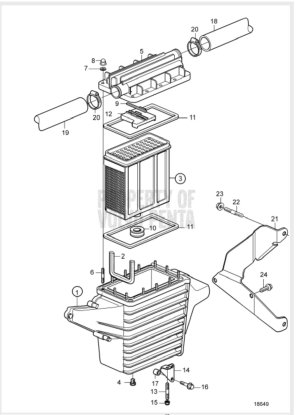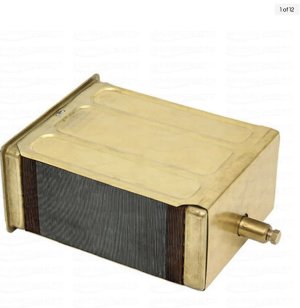Dessie
New Member
Hi All
Hoping I can get some help here with a problem after my recent service.
We have a Cranchi 39 Endurance running a pair of KAD44s. Right after being relaunched after the service, we experienced a problem where running at 2800-3000 revs we get some surging with the revs dropping off for a second or two as the compressor kicks in suggesting a boost issue. The typical boat working absolutely fine before heading into a service.
During the service we had the Port aftercooler cleaned as a new turbo was fitted during last season on the mooring and engineer said the turbo seal was leaking oil so marked the aftercooler to be cleaned at next service, all good so far.
Anyway, engineers came out for a sea trial yesterday and are saying this is normal and I should get used to it, that 2800 is close to the tipping over point where the turbo is just generating enough boost so any extra load on the engine will mean the compressor kicks in and that is the surge I am feeling, also added that I am running a classic after all, seas were flat so not sure where the extra load happened. This doesn't sit well as we don't get a kick from the compressor, we get a drop off in power first. Engines reached 3600 at WOT without the surging (full fuel and water tanks) and engineer said if we had a turbo problem then we wouldn't reach 3600. We can't go around at WOT and 2800/3000 is our cruising speed especially with the seas we get around here.
Checking for air leaks around the pipes we are getting nothing, having seen the aftercooler housing and noting the paint on the top bolts look untouched, versus the back bolts coming from the turbo, I asked how they removed the cassette and they said it was from the back which I thought was impossible as thought it had to be removed from the top "YouTube", anyway trusted them on this point, however I am wondering if this could possible mean something wrong with the seals in the aftercooler especially water bypassing the cooling tubes and the air is not being cooled causing the issue.
Logic would dictate the issue showed itself after something was done to the aftercooler, however we have had a progressive issue with the starboard engine taking longer to start over the season with the engineer suggesting its the low pressure fuel pump allowing fuel to drain back in the system so the engine needs to be primed each time. New fuel pump on order.
The classic quandary, is it fuel or air causing the issue and head is saying I should get the aftercooler removed and checked. Can this be done on the mooring, or is this a haul out again?
Video on YouTube if this helps.
Many thanks
Hoping I can get some help here with a problem after my recent service.
We have a Cranchi 39 Endurance running a pair of KAD44s. Right after being relaunched after the service, we experienced a problem where running at 2800-3000 revs we get some surging with the revs dropping off for a second or two as the compressor kicks in suggesting a boost issue. The typical boat working absolutely fine before heading into a service.
During the service we had the Port aftercooler cleaned as a new turbo was fitted during last season on the mooring and engineer said the turbo seal was leaking oil so marked the aftercooler to be cleaned at next service, all good so far.
Anyway, engineers came out for a sea trial yesterday and are saying this is normal and I should get used to it, that 2800 is close to the tipping over point where the turbo is just generating enough boost so any extra load on the engine will mean the compressor kicks in and that is the surge I am feeling, also added that I am running a classic after all, seas were flat so not sure where the extra load happened. This doesn't sit well as we don't get a kick from the compressor, we get a drop off in power first. Engines reached 3600 at WOT without the surging (full fuel and water tanks) and engineer said if we had a turbo problem then we wouldn't reach 3600. We can't go around at WOT and 2800/3000 is our cruising speed especially with the seas we get around here.
Checking for air leaks around the pipes we are getting nothing, having seen the aftercooler housing and noting the paint on the top bolts look untouched, versus the back bolts coming from the turbo, I asked how they removed the cassette and they said it was from the back which I thought was impossible as thought it had to be removed from the top "YouTube", anyway trusted them on this point, however I am wondering if this could possible mean something wrong with the seals in the aftercooler especially water bypassing the cooling tubes and the air is not being cooled causing the issue.
Logic would dictate the issue showed itself after something was done to the aftercooler, however we have had a progressive issue with the starboard engine taking longer to start over the season with the engineer suggesting its the low pressure fuel pump allowing fuel to drain back in the system so the engine needs to be primed each time. New fuel pump on order.
The classic quandary, is it fuel or air causing the issue and head is saying I should get the aftercooler removed and checked. Can this be done on the mooring, or is this a haul out again?
Video on YouTube if this helps.
Many thanks


